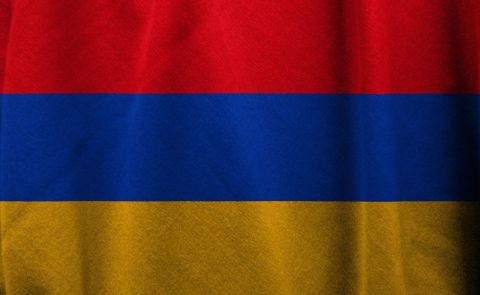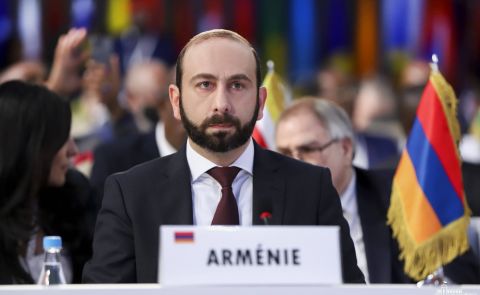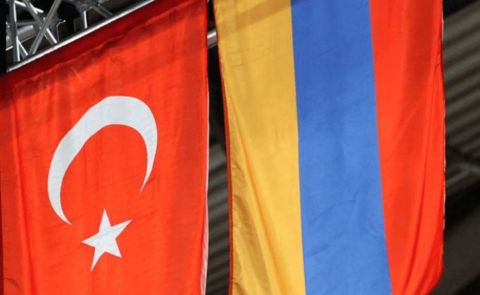
Tension Grows along Armenia-Azerbaijan Border

Small-scale clashes between Armenia and Azerbaijan, which started in the early hours of September 11, intensified on September 12-13. Clashes took place mainly on the border of Azerbaijan and Armenia. According to information released by both sides in recent months, border tensions have increased and become more intense. Azerbaijan and Armenia blame each other for the clashes and accuse each other of provocation.
On September 11, the Azerbaijani Defense Ministry stated that starting from the afternoon of September 10 to the morning of September 11, the Azerbaijan Army positions, stationed in the directions of Zaylik, Yellija, Yukhari Ayrim settlements of Kalbajar region, and Sadinlar settlement of Lachin region, were periodically subjected to fire by the use of various caliber weapons from the Armenian armed forces positions, stationed in the directions of Yukhari Shorzha, Ashaghi Shorzha, Zarkand settlements of Basarkechar region and Khazinavar settlement of the Gorus [Goris] region. As a result of the adequate retaliatory measures taken by the Azerbaijan Army Units, the opposing side was suppressed.
On the same day, the Armenian Defense Ministry denied Azerbaijani accusations. Ministry stated that the Ministry of Defence of Azerbaijan continues to spread disinformation. "On the night of September 10-11, the Armenian Armed Forces subdivisions did not open fire on Azerbaijani positions located on the eastern section of the Armenian-Azerbaijani border. The situation on the border is relatively stable; it is under complete control of the RA Armed Forces," the report added.
On September 12, the Azerbaijani Defense Ministry published new information stating that on September 11 in the evening, the Armenian armed forces units from the positions in the directions of Jil settlement of Chambarak region and Khanazakh settlement of Gorus [Goris] region of the Azerbaijani-Armenian state border using small arms subjected to fire the Azerbaijan Army positions, stationed in the directions of Novoivanovka settlement of Gadabay region and Husulu settlement of Lachin region. "Moreover, members of illegal Armenian armed detachments in the territory of Azerbaijan, where the Russian peacekeeping contingent is temporarily deployed, subjected to fire the Azerbaijan Army positions stationed in the direction of the Aghgaya settlement of the Kalbajar region. The Azerbaijan Army Units took adequate retaliatory measures," the information added.
On the same day, the Armenian Defense Ministry again denied claims made by the Azerbaijani side. It said: "On the evening of September 11, the subdivisions of the RA Armed Forces did not open fire in the direction of the Azerbaijani positions located in the eastern direction of the Armenian-Azerbaijani borderline. The situation at the border is relatively stable and is under the complete control of the RA Armed Forces."
On September 13, the Azerbaijani Defense Ministry reported more significant clashes along the border. The report said that during the night of September 12, the Armenian armed forces units committed large-scale provocations in the Dashkasan, Kalbajar, and Lachin directions of the Azerbaijani-Armenian state border. "At night, the Armenian armed forces' sabotage groups, using the area's mountainous terrain and the existing ravine gaps, mined the territories and supply roads between the positions of the Azerbaijan Army Units in different directions. The Armenian armed forces stationed in the directions of Basarkechar, Istisu, Garakilsa, and Gorus [Goris] settlements using various caliber weapons and mortars subjected to intensive fire some positions, shelters, and strongholds of the Azerbaijan Army in the territory of Dashkasan, Kalbajar and Lachin regions. As a result, there were losses among the military personnel, and the military infrastructure was damaged," the report added. The Ministry stated: "The Azerbaijan Army Units deployed in these directions are taking decisive retaliatory measures in order to suppress provocations committed by the Armenian armed forces and military threats to the territory and sovereignty of Azerbaijan, to ensure the safety of the military personnel, including civilian workers involved in infrastructure work in the territory of Kalbajar and Lachin regions. There are losses among the manpower and combat equipment of the Armenian armed forces involved in sabotage operations."
On the same day, the Armenian Defense Ministry published several reports. "Starting 00:05, September 13, the Azerbaijani Armed Forces launched intensive artillery and large caliber firearm shelling of Armenian positions in the direction of Goris, Sotk, and Jermuk. The Azerbaijani forces are also using UAVs in the attack," the Ministry said. In another report, the Ministry stated: "The intense firefight which began as a result of the large-scale Azerbaijani provocation still continues. The Armed Forces of Armenia are taking adequate countermeasures." In the report made at midnight, the Armenian Defense Ministry stated that the enemy continues intensive shelling from artillery, mortars, drones, and large-caliber guns at military and civilian infrastructures. "In some areas, Azerbaijani units have taken actions for positional advancement. Positional battles continue. The Armed Forces of the Republic of Armenia are responding adequately to the enemy and fully carrying out the combat tasks assigned to them," the information stated.
On the morning of September 13, Armenia's Defense Ministry said: "As of 8 am local time, positional battles are continuing in some parts of the border, (and) the adversary does not stop its advance attempts, but the situation on the Armenian-Azerbaijani border has not undergone significant changes." “The adversary continues to use artillery, mortars, UAVs (drones), and heavy caliber firearms in the direction of Vardenis, Sotk, Artanish, Ishkhanasar, Goris, and Kapan, targeting both military and civilian infrastructure," it added.
On the same day, Russia said it had negotiated a ceasefire between Armenia and Azerbaijan after fresh border clashes between the historic rivals left dozens dead. "We expect that an agreement reached as a result of Russian mediation on a ceasefire from 9:00 am Moscow time on September 13 this year will be carried out in full," the Russian Foreign Ministry said.
However, according to the information from both sides, clashes continue at the border.
Pashinyan talks about the recent situation along the border
Armenian Prime Minister Nikol Pashinyan announced in an address to parliament that Armenia has 49 casualties confirmed by the Defense Ministry. However, that number, unfortunately, is not final. "As of 11 am local time, the intensity of combat operations has decreased, but Azerbaijan's attacks continue in one or two directions," Pashinyan added. The Azerbaijani side did not reveal information on casualties yet (CET 12:25 am)
Pashinyan said: "The Azerbaijani side says that we want peace. We also say that we want peace. The question arises: who does not want peace? The point is that everyone has their own view of peace. Everyone understands peace in a way that benefits them."
"The Armenian side considers mutual recognition of territorial integrity acceptable, but it is not clear what Baku is talking about. Official Baku expects Armenia to recognize Karabakh as part of Azerbaijan. It is clear from Baku's statements that Azerbaijan, in the context of the delimitation and demarcation processes, is concerned with the "territories illegally given to Armenia" and is preparing to raise questions. As a rule, the conversation starts with Nrnadzor [a village in Meghri district] and ends with Yerevan," Pashinyan said.
"We do not intend to provide a corridor through the territory of Armenia. However, we are interested in opening roads that will pass through the territory of Armenia," he added. "We understood well that we need to carry out all kinds of reforms in the army to ensure the security of Armenia as quickly and efficiently as possible," Pashinyan said. Armenian Prime Minister stated: "Currently, based on Armenia's request, a meeting of the Standing Council of the CSTO [Collective Security Treaty Organization] is being held regarding the situation on the Armenian-Azerbaijani border."
See Also


Armenia Records 5.9% GDP Growth in 2024, Missing 7% Goal

Yerevan Balances Strategic Ties with Both US and Russia, Says Foreign Minister

FM Mirzoyan: Peace Deal with Azerbaijan Is Within Reach

Pashinyan and Erdogan Hold Call, Reaffirm Commitment to Ongoing Dialogue

